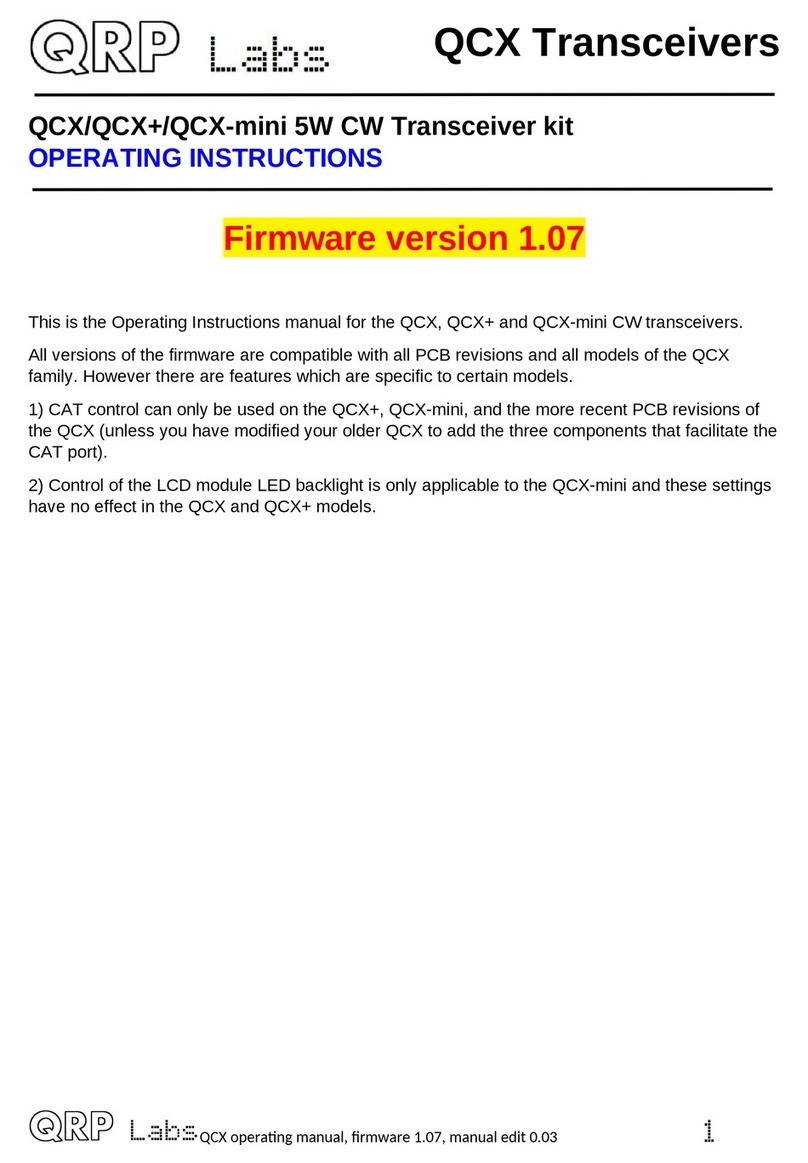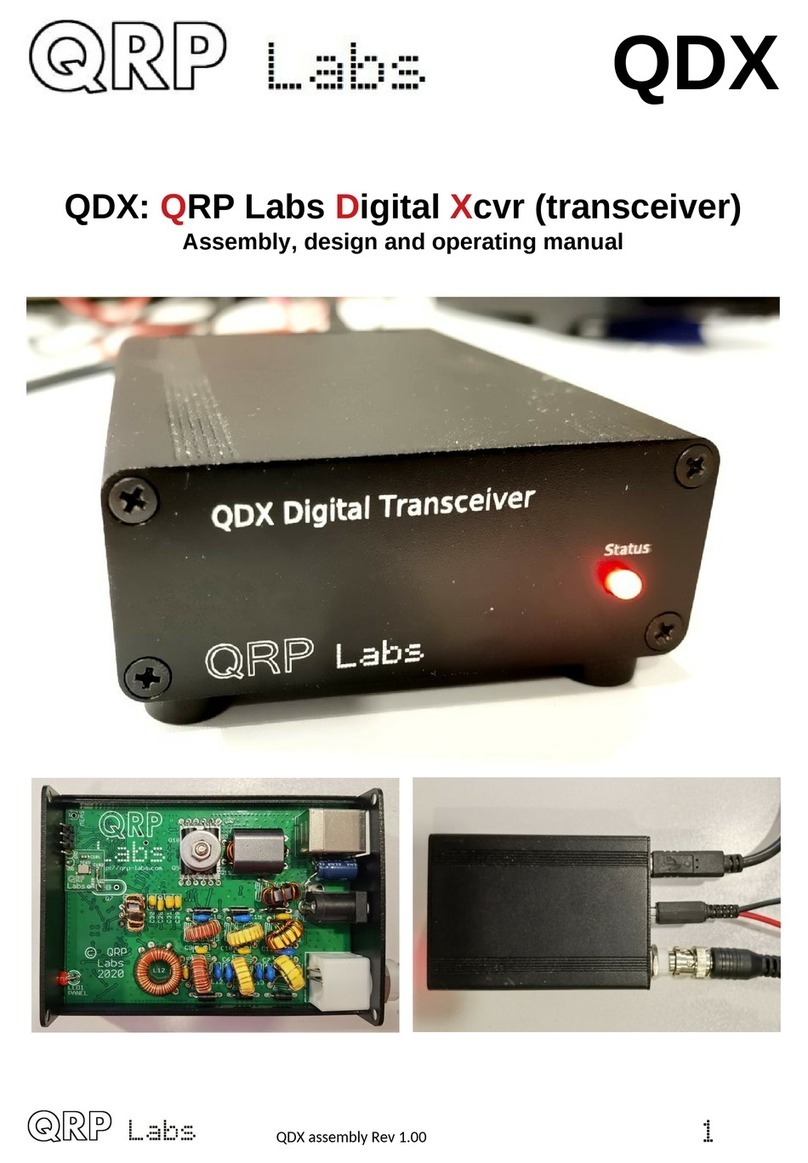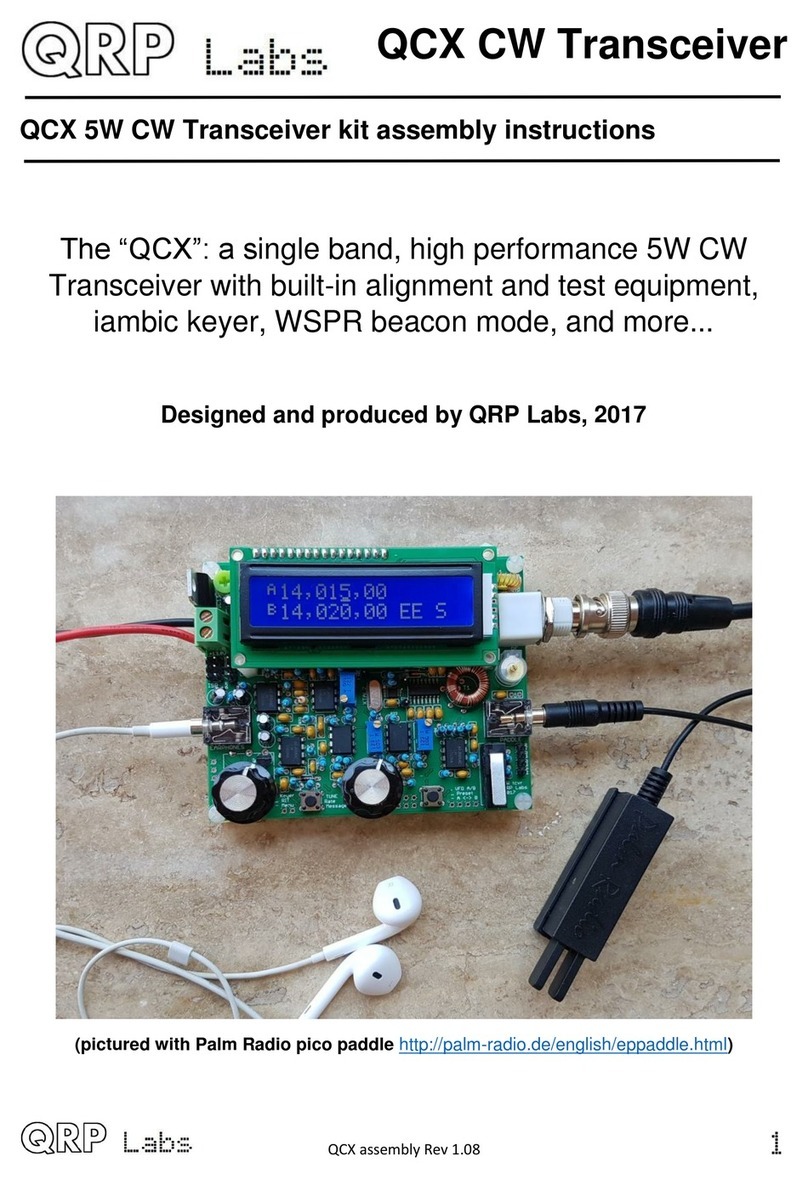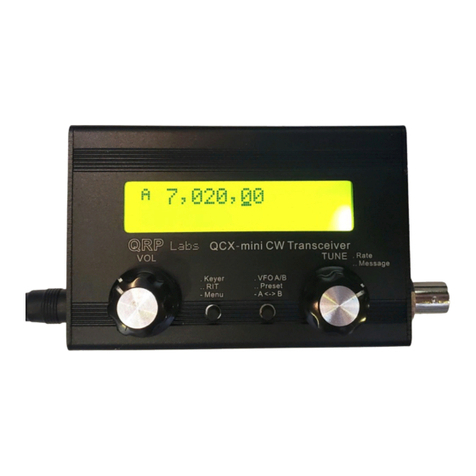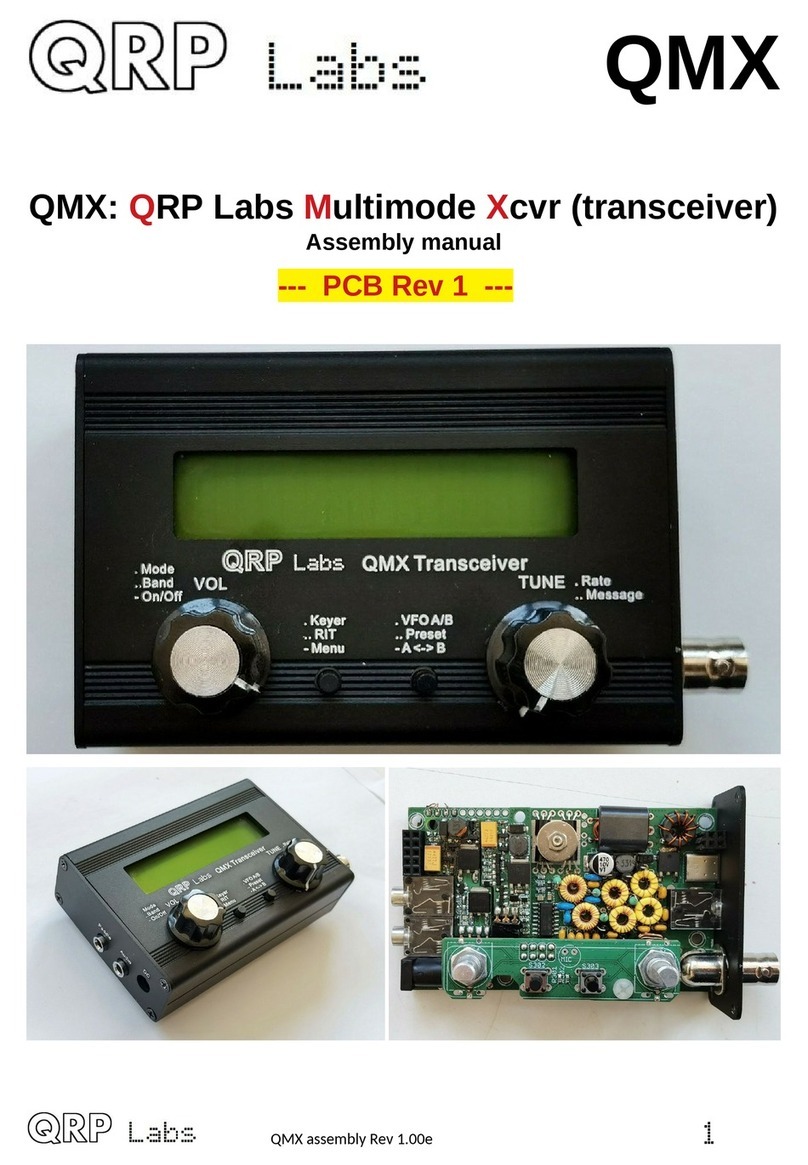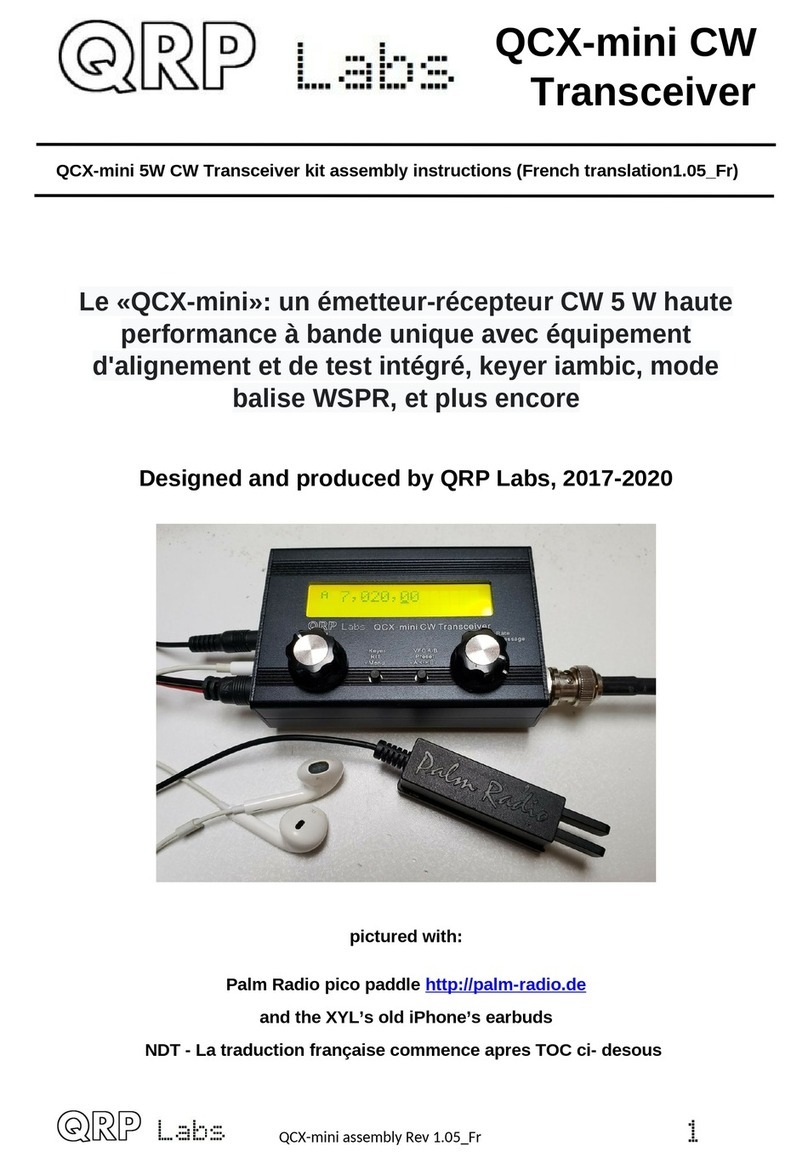
www.arrl.org QST March 2023 43
I use the transceiver primarily for
portable operations, as I am an avid
activator for both World Wide Flora
and Fauna and Parks on the Air®
programs. Rapid deployment is a
distinct advantage for eld operations,
and the QDX greatly facilitates this.
Previous eld setups included mul-
tiple peripherals, careful adjustment of
sound and drive levels, and many
extra wires that were easily miscong-
ured. The setup of the QDX is nearly
foolproof. Due to the nature of propa-
gation, portable operations, and the
parks programs, the majority of my
operating has been on 20 meters. I’m
sure other bands would work well, but
I typically do not spend a lot of time
away from 14074 kHz. I have, how-
ever, tested the transceiver and made
a few contacts on other bands.
Operating voltage and power output
are supposed to be determined by the number of turns
on the secondary winding of transformer T1. I chose the
12 V operation voltage, although I nd that my transmit-
ter is a bit more optimistic than one might like. The max-
imum recommended output is 6 W, and my transceiver
puts out nearly this much and more on several bands.
So far, I haven’t encountered any difficulties, but there
could be a replacement for the BS170s transistor in the
future. My battery of choice is LiFePO4, and the voltage
is a very steady 13.2 V under normal operating condi-
tions. The power output of the QDX is strictly a function
of input voltage and not related to audio drive. Manipu-
lation of the input voltage in the eld does present cer-
tain problems. The recommended input of 12 V can be
obtained by placing a diode inline with the power source
(see Table 1). I may try a LiPO4 pack (about 11.1 V) to
see if that drops the power output to a more acceptable
level.
There is a jack for operations with an external power
amplier, but I have not found it necessary to move to
QRO operations. I have made thousands of contacts
with plenty of DX using low power and a good antenna.
An LED indicator shows that the radio is powered up. In
transmit, the LED has a medium blink rate. It shows a
fast blink rate on boot-up, or very slow and steady blink
rate if it is in the rmware upgrade mode. Boot time is
less than 1 second, but the fast LED will blink for 5 sec-
onds. For portable operations, setup takes a little longer
than setting up the antenna. There are no settings to
ddle with. The transmit level in WSJT-X does not affect
USB cable, power, and antenna connection on the
back of the radio. While no adjustment or alignment is
needed, it’s possible to access conguration and test
menus. To access these features, you will need to use
terminal software like PuTTY or Minicom, which will give
you access to several menus within the radio. The rm-
ware is upgradable. The radio seems exceptionally
stable, likely due to the TCXO that controls the refer-
ence oscillator.
There are no relays within the radio. All switching is
done with PIN diodes. I have used the radio only for
FT4, FT8, and JS8Call, but operations with these
modes have been nearly trouble-free. Modes that will
work shift frequencies one at a time. The QDX cannot
be used for phase-shift keying, multi-tone modes, or
CW. It is reported to work with RTTY (with some com-
promises), DominoEX, and Olivia.
There was one instance of a brief failure, but it was
really a computer operating system problem, and it had
nothing to do with the QDX. The USB port designation
changed from /DEV/TTYACM1 to /DEV/TTYACM0, but this
was easily remedied in the eld. This can happen with
any operating system. With Linux-based systems it is
possible to make a permanent port assignment to avoid
this problem. While I have had some experience with
Mac OS X, it has been quite a while, and I am unfamil-
iar with recent changes within the OS. I also have very
little recent experience with Microsoft Windows.
Table 1
QRP Labs QDX HF Digital Transceiver (Rev4)
Manufacturer’s Specifications Measured in the ARRL Lab
Frequency coverage: 80, 60, 40, As specied.
30, and 20 meters.
Power requirement: At 12 V dc: transmit, 0.9 A;
9 V or 12 – 13 V dc with modication. receive, 166 mA.
Receive
Modes of operation: Digital only. As specied.
Transmitter Transmitter Dynamic Testing
Power output: Up to 5 W. At 12 V dc: 3.5 MHz, 4.5 W; 5.3 MHz,
4.8 W; 7 MHz, 4.2 W; 10.1 MHz,
5.4 W; 14 MHz, 5.5 W.*
Spurious-signal and harmonic suppression: Typically >52 dB; worst case,
Not specied. 44 dB (60 meters). Complies with FCC
emission standards.
Size (height, width, depth, including protrusions):
1 × 2.48 × 3.49 inches. Weight: 0.30 pounds/(135 grams).
*RF power output was 3.0 W on 14 MHz with 9 V dc input voltage.
